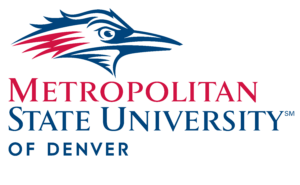 Metropolitan State University of Denver has made significant strides in the development of microcredentials by implementing a consistent policy for microcredentials that has enabled departments to respond to learner demand for a broader range of offerings. Both credit and non-credit microcredentials are supported, each with their own unique sets of technical tools and business processes.
Metropolitan State University of Denver has made significant strides in the development of microcredentials by implementing a consistent policy for microcredentials that has enabled departments to respond to learner demand for a broader range of offerings. Both credit and non-credit microcredentials are supported, each with their own unique sets of technical tools and business processes.
Credentials Offered
- MSU-Denver is an urban campus that is shared with two other schools serving a wide range of learners with about half of them using transfer credits.
- The university offers bachelor’s degrees, master’s degrees, pathways to licensure, and certificates—all of which are approved by the Higher Learning Commission, listed on the transcript, and supported by multiple transfer articulation agreements.
- Began formally offering microcredentials and digital badges in 2022 with the adoption of a university policy. Prior to that, these offerings were informally offered at the department level.
Technology Stack
- External website: The university uses WordPress for managing the content on its public website, https://www.msudenver.edu/.
- Credential curriculum development: The university uses Curriculog by ModernCampus for curriculum proposals, reviews, approvals, and updates. It also uses this technology and process for microcredential offerings to control costs and ensure that faculty are familiar with the tool. The university built a special form for microcredentials to gather information about the development of the microcredential concept, feedback from learners, enrollment expectations, assessments, competencies, and more.
- Student Information System (SIS): The university uses Ellucian’s Banner as a student information system. It handles course registrations, financial aid, and tuition payments for all credit-based offerings. However, this system does not track microcredentials.
- Learning Management System (LMS): The university uses Canvas as its learning management system.
- Badges: The university uses Portfolium for issuing credit-based badges. The Curriculum, Academic Effectiveness, and Policy Development Data Manager loads all approved badges and related metadata into the badge tool for faculty; there is no automated connection with the Curriculog tool. Faculty enroll learners in the microcredential, mark learner demonstration of competencies and award the badges. The marketing department creates all badge images with visual indicators for university-level cohesion and consistent indicators for different levels of badges. Note: non-credit badges through the Innovative and Lifelong Learning Office use a different badge-issuing tool with support for articulation agreements with corresponding credit-based offerings.
- Transcript: The university uses Parchment to provide degree and certificate transcripts. Microcredentials are not listed on transcripts.
Key Tactics
- Microcredential policy: Engaged multiple university stakeholders through shared governance structures to define a policy on microcredentials. Faculty own academic policy and were responsible for writing the microcredential policy. Policy approvals were required from the faculty advisory committee, the faculty Senate, and the University Policy Advisory Council (UPAC), which includes broad representation of stakeholder groups and legal counsel. The policy was shared with the President’s Council and senior leadership to be integrated into strategic planning. The policy established an enduring basis for developing supportive technical infrastructure, quality standards, roles and responsibilities, and requirements for microcredentials.
- Microcredentials based on credit-based components: The university creates microcredentials from credit-based components, such as courses or parts of a program. This approach allows faculty to design microcredentials without requiring additional reviews and approvals, and promotes experimentation with microcredential offerings across the university.
- Badging Committee: Microcredential proposals are reviewed and approved by faculty administration and a broad-based Badging Committee. Once approved, the Curriculum Office builds the badge offering and enters the related credential information into a public-facing “catalog” called Digital Badge Bulletin. The Bulletin can be updated more regularly than the university catalog. The Badging Committee meets monthly and, to benefit students, approved badges are developed and deployed as quickly as possible—usually by the next meeting.
- Use existing technologies: The university decided to customize existing curricular tools as much as possible to support microcredential offerings. It supports department-specific needs using Curriculog’s “other form” option and attached documents to describe how competency connections are represented in the system, such as alignment to external standards or rubrics used to assess competency demonstrations. This centralization of all microcredential offerings in the Curriculog tool also supported better transparency across these offerings among departments and faculty.
External Initiatives
- Microcredential convenings: The university participates in multiple national microcredential initiatives such as the Credential As You Go and the Badging Summit. These efforts allow faculty and staff to learn from other institutions and build momentum for related microcredential projects.
Lessons Learned
- On benefiting learners: “Microcredential lets the learner go to their employer and say: ‘Now I am versed in this and I do have this training and skill.’ They get the step up without having to wait until they get their four-year degree.”
- On technology challenges: “People want parts of this to be more automated than it is. People want the technology to do more than it can. We need the flexibility to support all departments and their specific requirements, often for specialized accreditation needs.”
More Information
 Metropolitan State University of Denver has made significant strides in the development of microcredentials by implementing a consistent policy for microcredentials that has enabled departments to respond to learner demand for a broader range of offerings. Both credit and non-credit microcredentials are supported, each with their own unique sets of technical tools and business processes.
Metropolitan State University of Denver has made significant strides in the development of microcredentials by implementing a consistent policy for microcredentials that has enabled departments to respond to learner demand for a broader range of offerings. Both credit and non-credit microcredentials are supported, each with their own unique sets of technical tools and business processes.